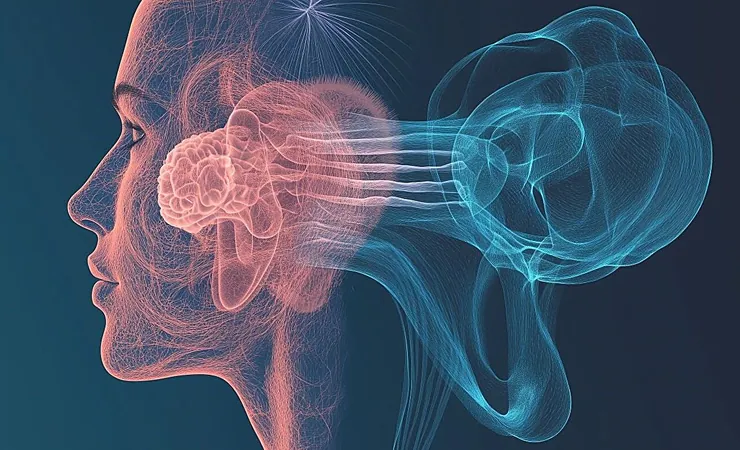
Unveiling the Secrets of MRI in Diagnosing Meniere's Disease: New Study Reveals Surprising Insights!
2025-01-03
Author: Sarah
Introduction
A groundbreaking study recently published in European Radiology on December 3 sheds new light on diagnosing Meniere's disease (MD) through advanced magnetic resonance imaging (MRI) techniques. Researchers from King's College London, led by Steve Connor, have embarked on a meticulous investigation into the efficacy of MRI descriptors in identifying this often-misdiagnosed condition.
Understanding Meniere's Disease
Menière’s disease is a debilitating inner ear disorder characterized by vertigo, hearing loss, and tinnitus that can severely affect quality of life. However, its diagnosis has traditionally been a challenge, which is where this innovative study comes into play.
Study Overview
In their retrospective, single-center study, the team analyzed data from 132 patients exhibiting Meniereform symptoms. They employed two advanced MRI techniques: the delayed post-gadolinium "zero-point" endolymph (ZPE) and an optimized real-inversion recovery sequence with negative signal endolymph (NSE). Patients were grouped into those meeting wider clinical criteria for Meniere's disease and a control group.
Exciting Findings
The results were exciting! The researchers found that nine out of 14 MRI descriptors showed markedly improved performance when using the NSE sequence, including a notably increased perilymph signal-to-noise ratio. Of particular interest were the descriptors indicating "saccule absent, large as or confluent with the utricle" and "asymmetric perilymphatic enhancement," for which ZPE demonstrated superior diagnostic reliability with significant risk ratios.
Predictive Model Effectiveness
In their quest for an optimal predictive model for diagnosing "definite Meniere's disease," the study showed that combining both imaging sequences yielded a remarkable accuracy of 95.8% in correctly classifying the ears assessed. The area under the receiver operating characteristic curve—an essential measure of diagnostic accuracy—was also impressive, reaching 0.914 for ZPE and 0.893 for NSE.
Conclusion and Implications
The authors concluded that while both MRI sequences offer unique advantages, the choice of sequence will significantly affect which features are evaluated in the quest for a diagnosis. This research not only enhances our understanding of Meniere's disease but also paves the way for improved clinical practices in using MRI to diagnose this complex condition.
Future Prospects
As the medical community continues to explore the optimal use of technology in diagnostics, these findings may revolutionize how Meniere's disease is detected and managed, potentially leading to better outcomes for thousands suffering from this elusive ailment. Stay tuned for more fascinating insights into the world of medical imaging!
 Brasil (PT)
Brasil (PT)
 Canada (EN)
Canada (EN)
 Chile (ES)
Chile (ES)
 Česko (CS)
Česko (CS)
 대한민국 (KO)
대한민국 (KO)
 España (ES)
España (ES)
 France (FR)
France (FR)
 Hong Kong (EN)
Hong Kong (EN)
 Italia (IT)
Italia (IT)
 日本 (JA)
日本 (JA)
 Magyarország (HU)
Magyarország (HU)
 Norge (NO)
Norge (NO)
 Polska (PL)
Polska (PL)
 Schweiz (DE)
Schweiz (DE)
 Singapore (EN)
Singapore (EN)
 Sverige (SV)
Sverige (SV)
 Suomi (FI)
Suomi (FI)
 Türkiye (TR)
Türkiye (TR)
 الإمارات العربية المتحدة (AR)
الإمارات العربية المتحدة (AR)